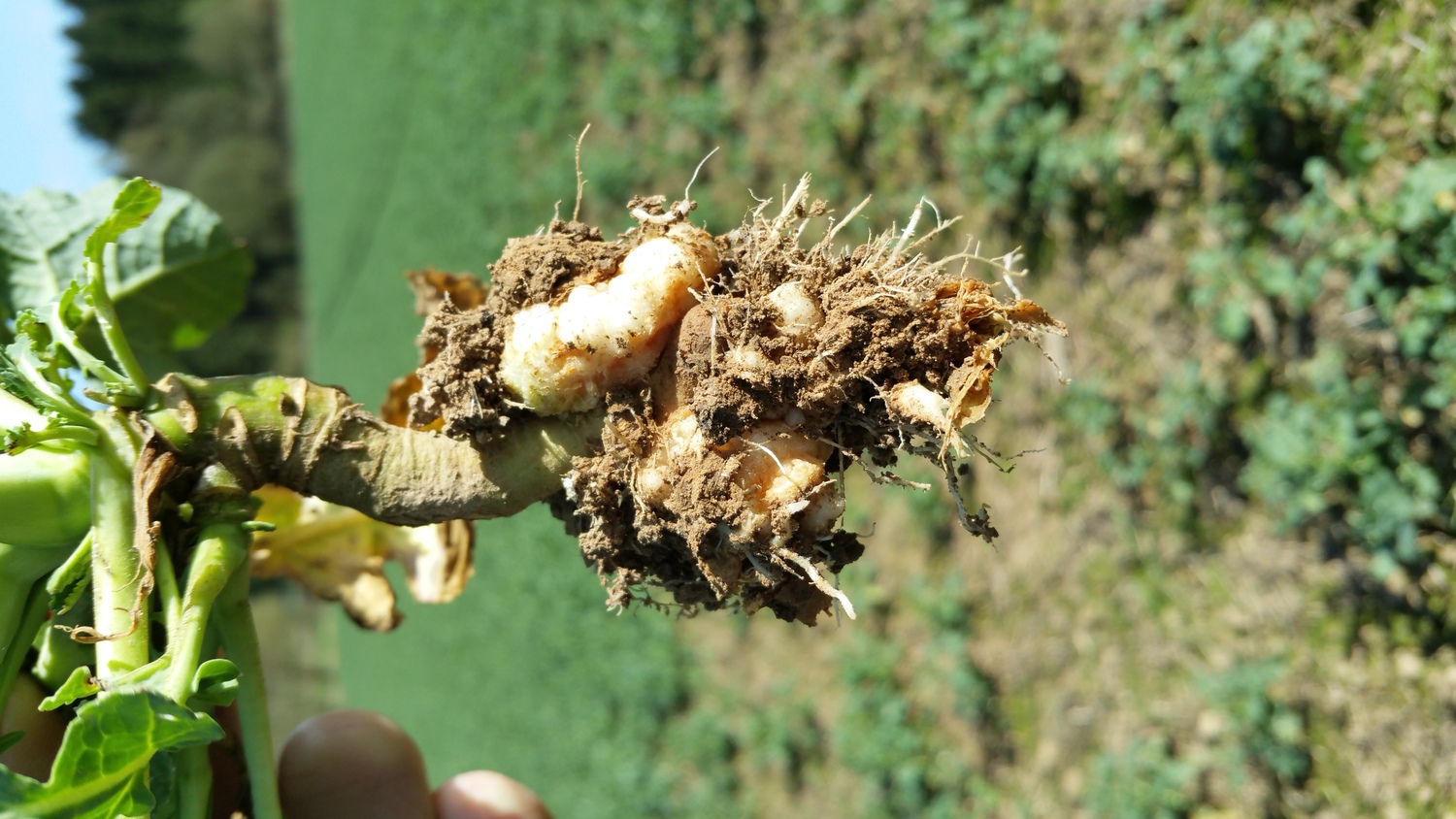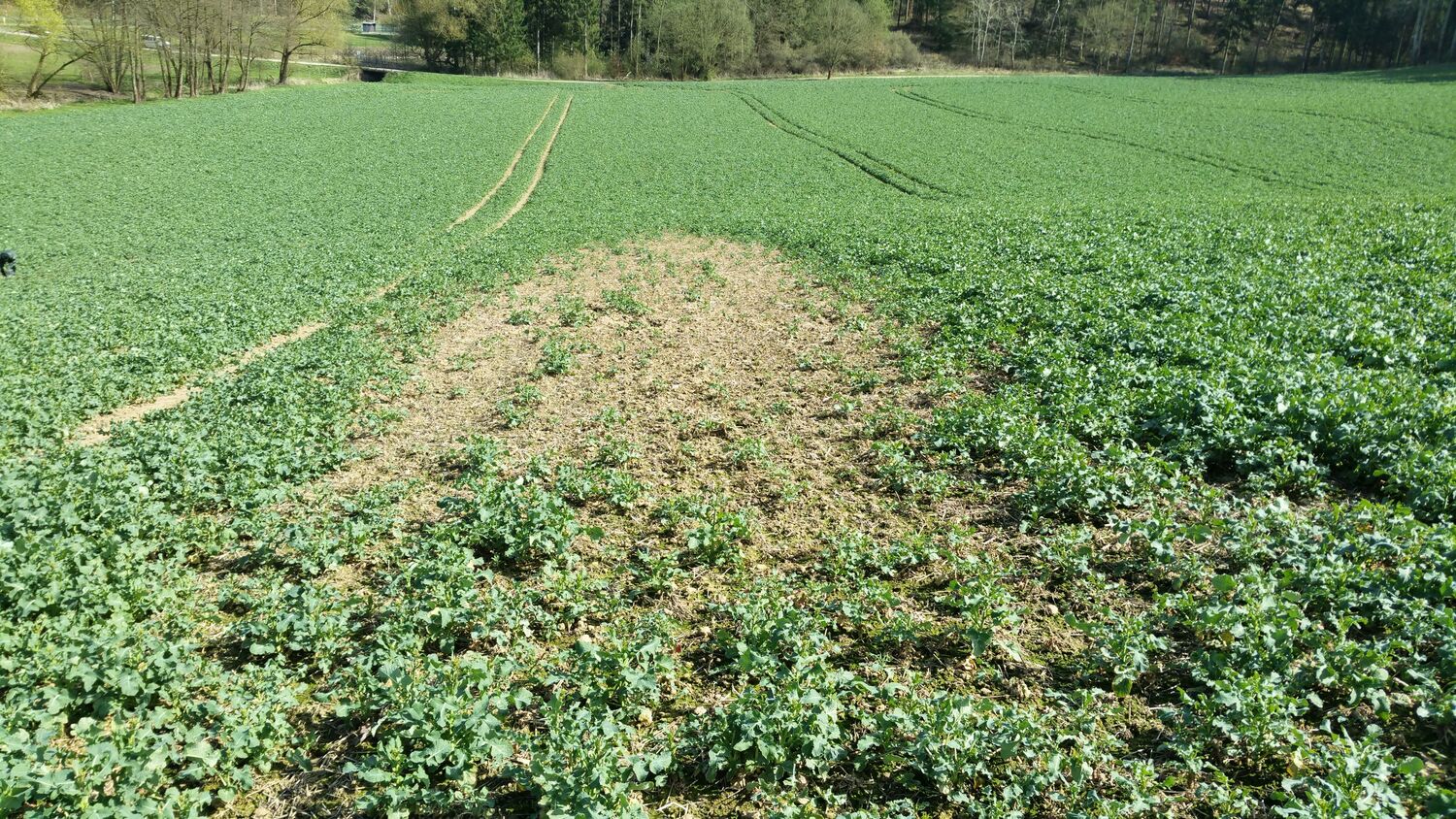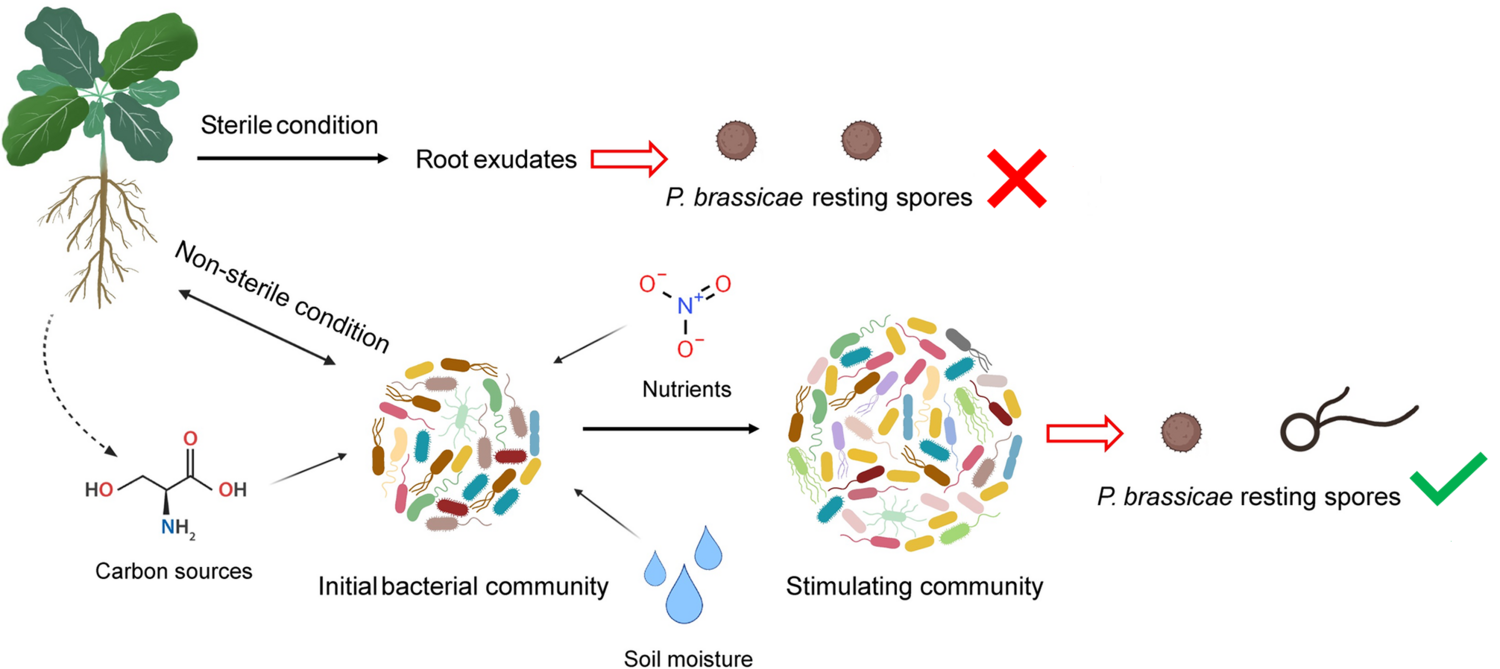Goettingen, Germany
May 2023

Growths on rapeseed roots due to infestation with Plasmodiophora brassicae - Photo: Andreas von Tiedemann
Research group led by Göttingen University identifies importance of bacteria for germination of disease-causing fungus
Crops have a high nutritional value, which makes them essential to people. However, this also makes them attractive to harmful microorganisms, such as bacteria or fungi. In fact, most pathogens can only attack specific plants and there has been extensive research to try to discover how fungi locate their host plants. Until now, it was thought that host plants stimulate fungal spores in soil to germinate by releasing specific sugars, amino acids and other compounds from their roots – known as “root exudates” – thereby unwittingly triggering their own infestation. Researchers at the University of Göttingen have now shown that this is not the primary mechanism for triggering spore germination that leads to root infection. Instead, the activity of the spores is influenced by a combination of different abiotic factors and particular soil bacteria communities. The results were published in PLOS Pathogens.

Rapeseed field with defect caused by clubroot - Photo: Andreas von Tiedemann
Researchers from the Plant Pathology and Crop Protection Division investigated whether root exudates from host and non-host plants stimulate dormant spores of the common fungus Plasmodiophora brassicae to germinate under sterile conditions. "In nature, the fungus infects the roots of oilseed rape plants making them swell and become misshapen," explains Yao Wang, first author of the study. "The disease is known as clubroot and it infects cabbage, broccoli and other brassica crops. It occurs in almost all rapeseed-growing areas around the world, causes significant damage to crops and cannot be controlled directly."
The researchers found that sterile root exudates did not stimulate clubroot spores to germinate, and there was no difference between host and non-host plants. Experiments in the laboratory showed that the presence of soil bacteria as well as nitrate and certain sugars and amino acids is essential for triggering germination. The composition of the bacterial microbiome changed when nitrate and a suitable carbon source were available at a certain soil moisture: at this point, the proportion of stimulating bacterial groups increased and this triggered spore germination. It is still unclear which bacterial groups are required and the exact mechanism which ultimately breaks spore dormancy.

Factors involved in stimulating the germination of resilient spores of the fungus Plasmodiophora brassicae - Photo: Graphic: Yao Wang
"Understanding the factors and mechanisms that control dormancy and germination of such resilient spores in the soil is an important step towards innovative strategies in the control of root diseases such as clubroot," emphasises Professor Andreas von Tiedemann, Head of Göttingen University’s Division of Plant Pathology and Crop Protection. "With this knowledge, the infection potential of arable soil could be reduced. For instance, if farmers were able to trigger the germination of these spores in a year in which the host plant is absent from the fields, the pathogen will not be able to find a host and will not reproduce."
Original publication: Wang, Y.; Zheng, X.; Sarenqimuge, S.; von Tiedemann, A. The soil bacterial community regulates germination of Plasmodiophora brassicae resting spores rather than root exudates. PLoS Pathogens 19(3) 2023. DOI: 10.1371/journal.ppat.1011175.
Raps und der Feind im Boden
Forschungsgruppe erkennt Bedeutung von Bakterien für die Keimung pathogener Pilze
(pug) Nutzpflanzen haben einen hohen Nährwert. Das macht sie für uns Menschen essenziell – und auch attraktiv für schädliche Mikroorganismen. Die meisten Pathogene können nur bestimmte Pflanzen befallen. Wie pflanzenpathogene Pilze im Boden ihre Wirtspflanze finden, wird seit Jahren erforscht. Bisher galt, dass die Wirtspflanzen die Sporen der Pilze durch die Abgabe von Zucker, Aminosäuren und anderen Verbindungen aus ihren Wurzeln spezifisch zur Keimung anregen und so ihren Befall auslösen. Forschende der Universität Göttingen haben nun widerlegt, dass die sogenannten Wurzelexsudate die primären Auslöser der Sporenkeimung und damit der Wurzelinfektion sind. Stattdessen wird die Aktivität der Sporen durch eine Kombination verschiedener Faktoren gesteuert. Dabei spielt die Gemeinschaft der Bakterien im Boden eine wichtige Rolle. Die Ergebnisse sind in der Fachzeitschrift PLOS Pathogens erschienen.
Die Wissenschaftlerinnen und Wissenschaftler der Abteilung Pflanzenpathologie und Pflanzenschutz untersuchten, ob Wurzelexsudate von Wirtspflanzen und Nicht-Wirtspflanzen unter sterilen Bedingungen ruhende Sporen des niederen Pilzes Plasmodiophora brassicae zur Keimung anregen. „Der Pilz befällt Rapspflanzen und löst Wucherungen an den Wurzeln aus“, beschreibt Yao Wang, Erstautorin der Studie. „Die Krankheit ist als Kohlhernie auch bei Kohl bekannt. Sie tritt in fast allen Rapsanbaugebieten weltweit auf, verursacht erhebliche Ertragsverluste und kann nicht direkt bekämpft werden.“
Steril gewonnene Wurzelexsudate regten die Sporen des Pilzes nicht zur Keimung an. Dabei gab es keinen Unterschied zwischen Wirtspflanzen und Nicht-Wirtspflanzen. Versuche im Labor zeigten, dass für die Auslösung der Keimung die Anwesenheit von Bodenbakterien, Nitrat sowie bestimmten Zuckern und Aminosäuren unerlässlich ist. Die Zusammensetzung des bakteriellen Mikrobioms veränderte sich, wenn Nitrat und eine geeignete Kohlenstoffquelle bei einer bestimmten Bodenfeuchtigkeit verfügbar waren: Dann erhöhte sich der Anteil von Bakteriengruppen, die eine Keimung der Sporen auslösen. Noch ist unklar, welche das sind und welcher Mechanismus die Keimruhe letztlich beendet.
„Die Aufklärung der Faktoren und Mechanismen, die bei Dauersporen im Boden die Keimruhe und das Auskeimen steuern, ist ein wichtiger Schritt zu innovativen Strategien bei der Bekämpfung von Wurzelkrankheiten wie der Kohlhernie“, betont Abteilungsleiter Prof. Dr. Andreas von Tiedemann. „Mit dem Wissen ließe sich das Infektionspotenzial des Ackerbodens senken: Wenn man die Keimung der Sporen in einem Jahr auslöst, in dem die Pflanze nicht angebaut wird, findet das Pathogen keine Wirtspflanze und kann sich nicht weiter vermehren.“
Originalveröffentlichung: Wang, Y.; Zheng, X.; Sarenqimuge, S.; von Tiedemann, A. The soil bacterial community regulates germination of Plasmodiophora brassicae resting spores rather than root exudates. PLoS Pathogens 2023. DOI: 10.1371/journal.ppat.1011175.